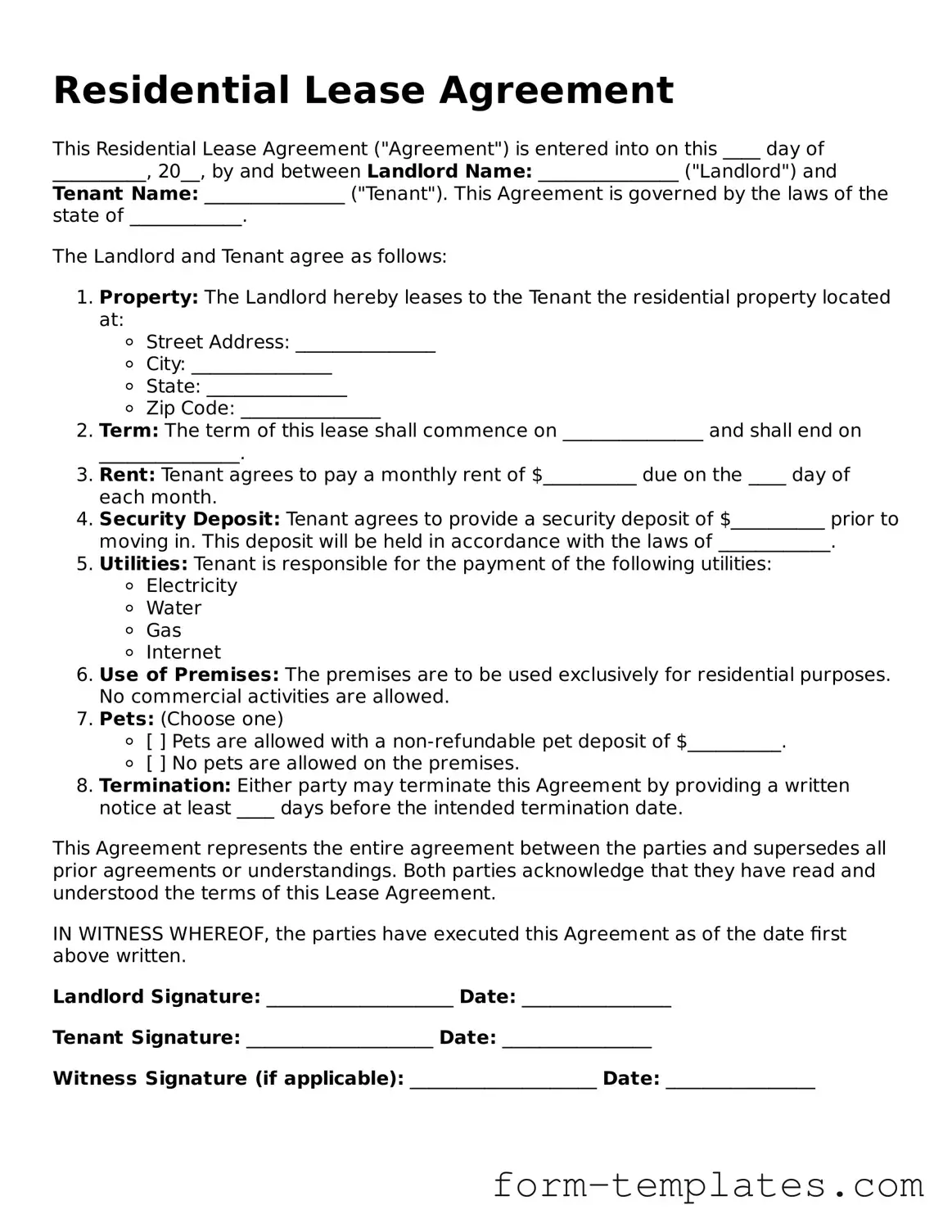What is a Lease Agreement?
A lease agreement is a legal document that outlines the terms under which one party agrees to rent property from another party. It details the rights and responsibilities of both the landlord and the tenant. This agreement typically covers aspects such as the duration of the lease, rental amount, and rules regarding the use of the property.
Why is a Lease Agreement important?
A lease agreement is important because it provides clarity and protection for both parties involved. It helps to prevent misunderstandings by clearly outlining expectations and obligations. In case of disputes, the lease serves as a reference point to resolve issues, making it a crucial document in the rental process.
What should be included in a Lease Agreement?
While lease agreements can vary, they typically include:
-
Names of the landlord and tenant.
-
Description of the rental property.
-
Duration of the lease (start and end dates).
-
Monthly rent amount and payment due dates.
-
Security deposit details.
-
Rules regarding pets, maintenance, and repairs.
-
Termination conditions and notice requirements.
How long does a Lease Agreement last?
The duration of a lease agreement can vary widely. Most residential leases are for one year, but they can also be month-to-month or for a shorter or longer period. It’s essential to specify the length of the lease in the agreement to avoid confusion later on.
Can a Lease Agreement be modified?
Yes, a lease agreement can be modified, but both the landlord and tenant must agree to the changes. Modifications should be documented in writing and signed by both parties to ensure that the new terms are legally enforceable. Verbal agreements are generally not sufficient.
What happens if the Lease Agreement is broken?
If either party breaks the lease agreement, it can lead to legal consequences. For tenants, this may include losing their security deposit or facing eviction. Landlords might seek damages or unpaid rent. It’s often advisable to review the terms of the lease to understand the specific penalties for breaking the agreement.
Is a Lease Agreement legally binding?
Yes, a lease agreement is a legally binding contract. Once both parties sign it, they are obligated to adhere to the terms outlined in the document. If either party fails to comply, the other party may have legal grounds to pursue remedies, such as seeking damages or enforcing the lease terms in court.
Do I need a lawyer to create a Lease Agreement?
While it’s not required to have a lawyer draft a lease agreement, consulting with one can be beneficial, especially for complex situations. A legal professional can ensure that the agreement complies with local laws and addresses specific needs, providing additional peace of mind for both landlords and tenants.
What should I do if I have a dispute regarding the Lease Agreement?
If a dispute arises, the first step is often to communicate directly with the other party to try to resolve the issue amicably. If that doesn’t work, reviewing the lease agreement can help clarify each party’s rights. If necessary, mediation or legal action may be considered as a last resort.
